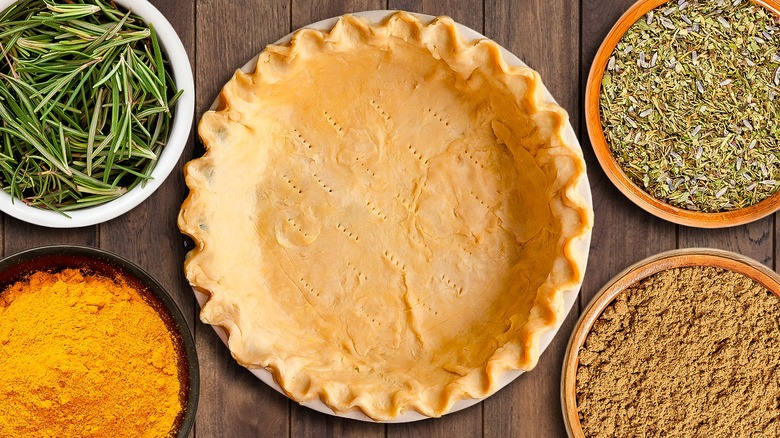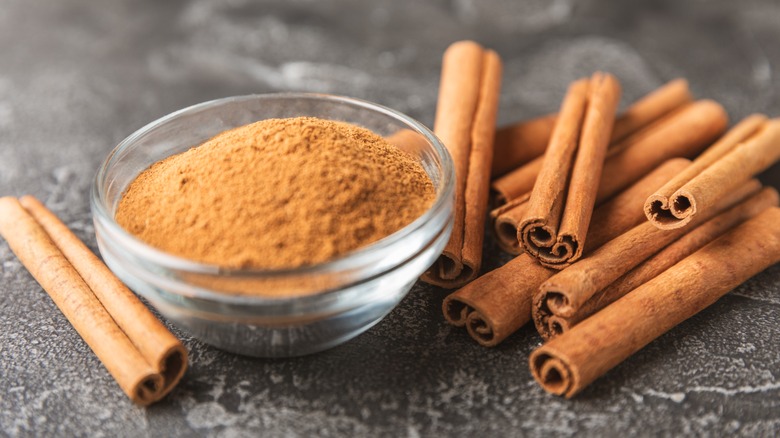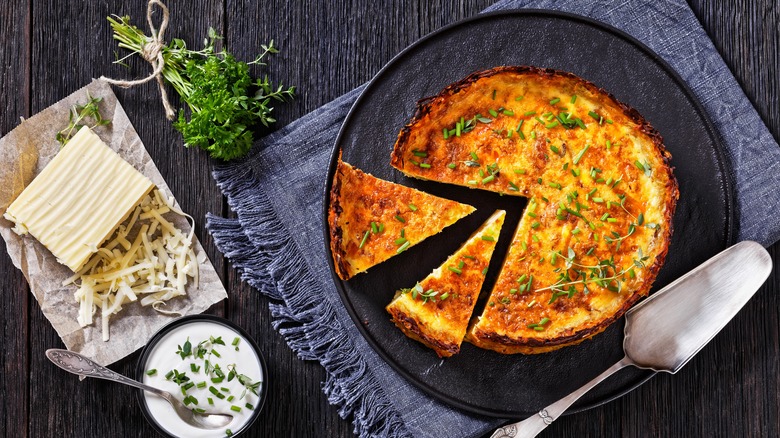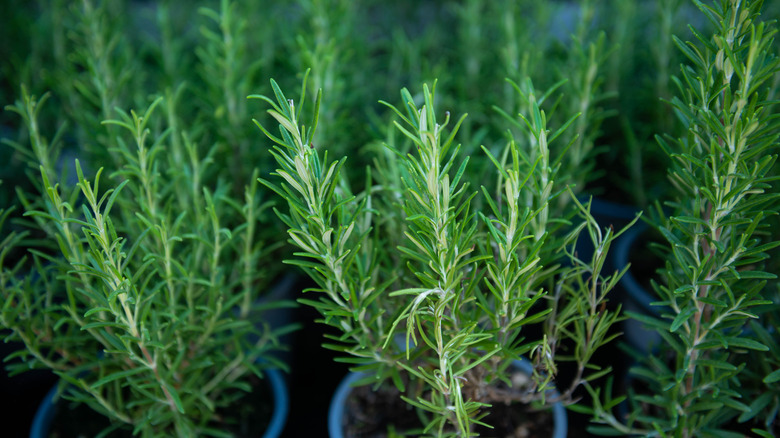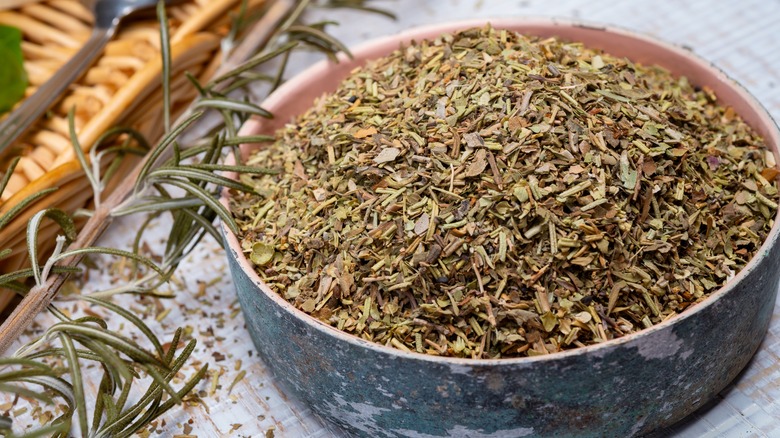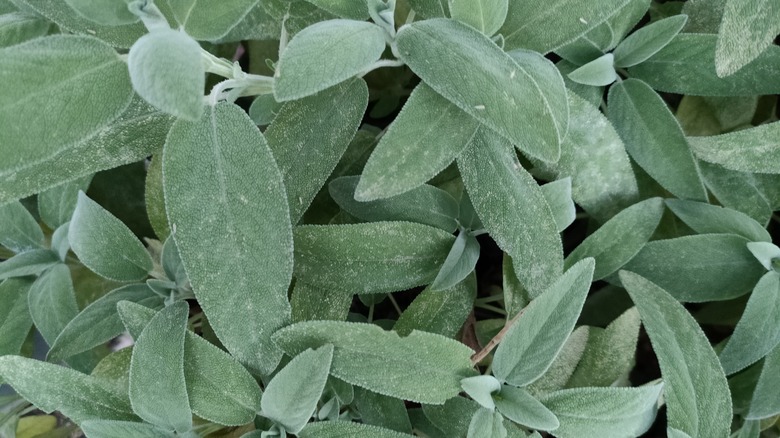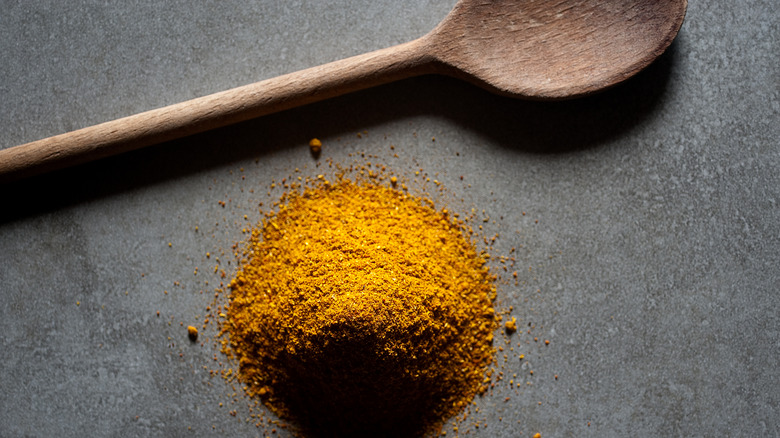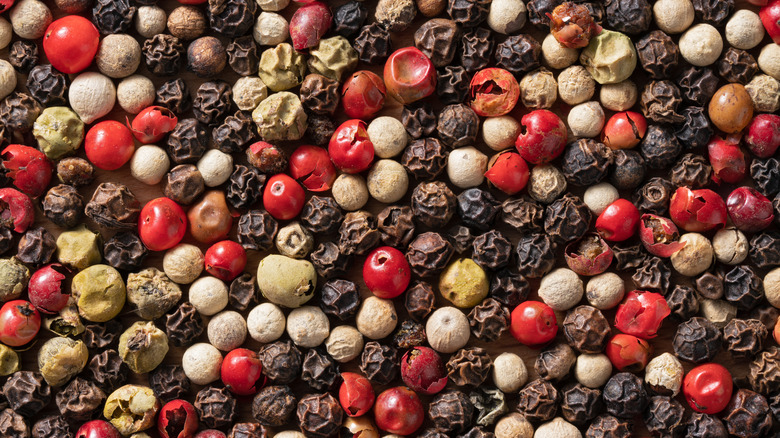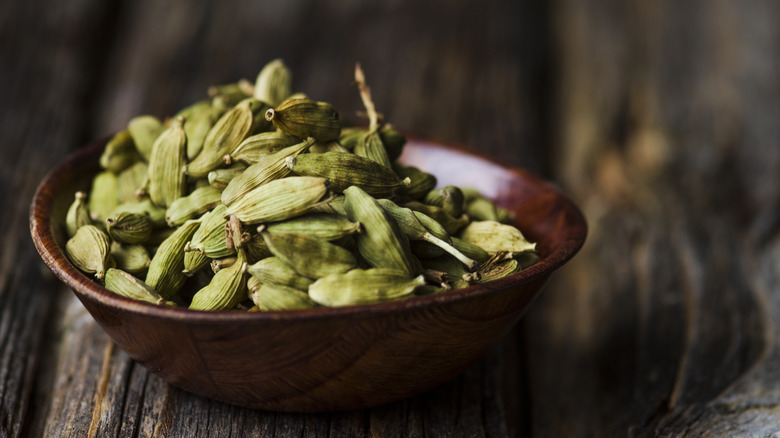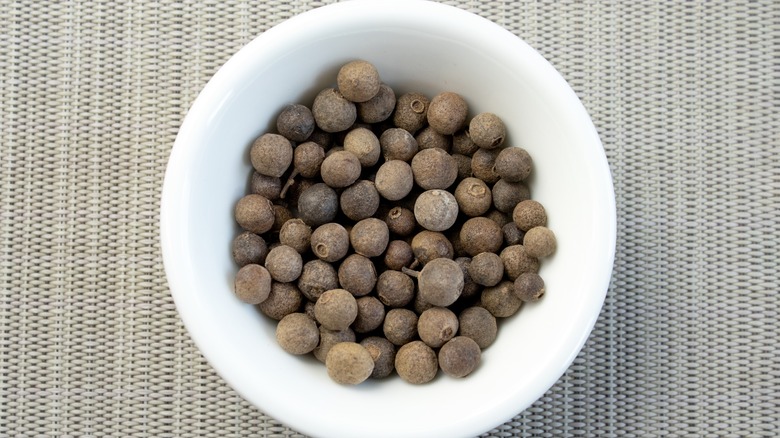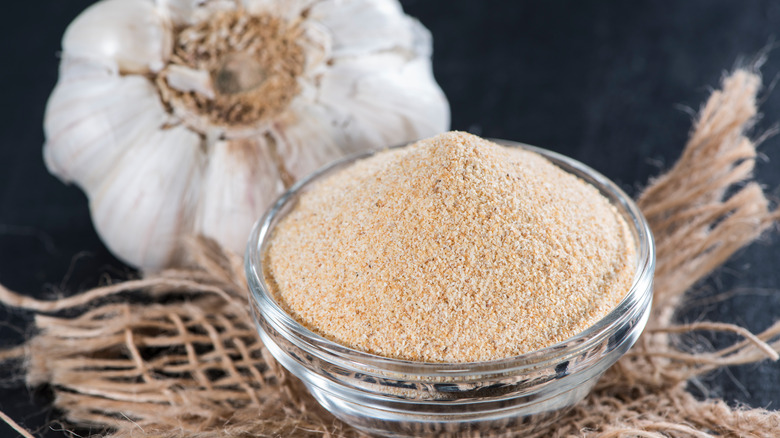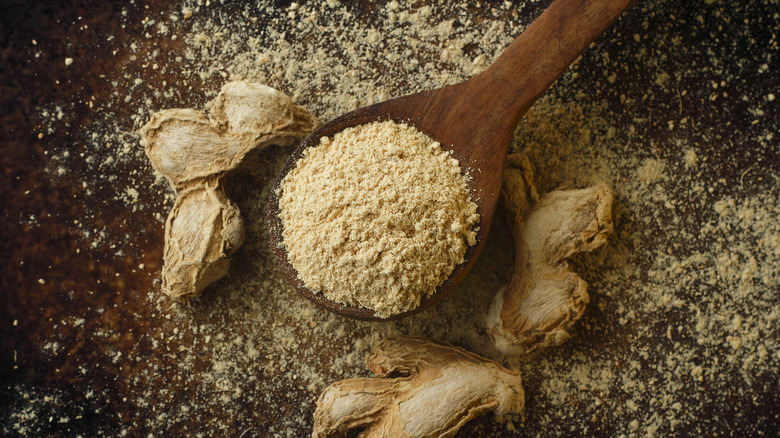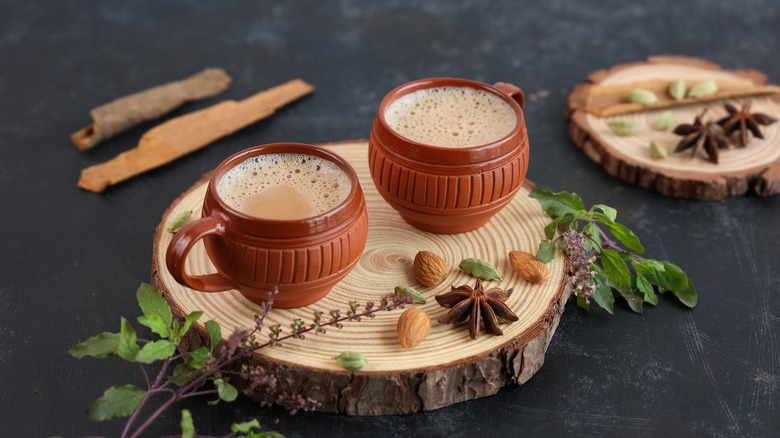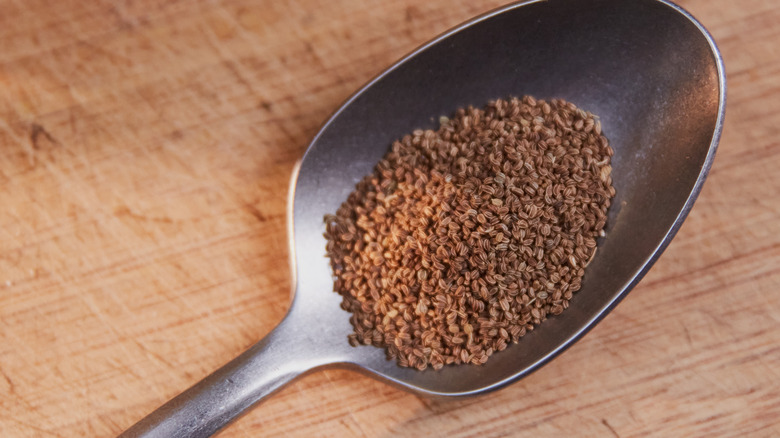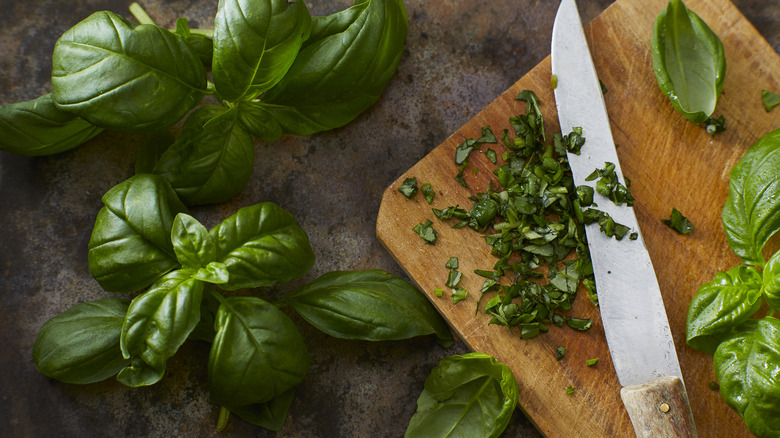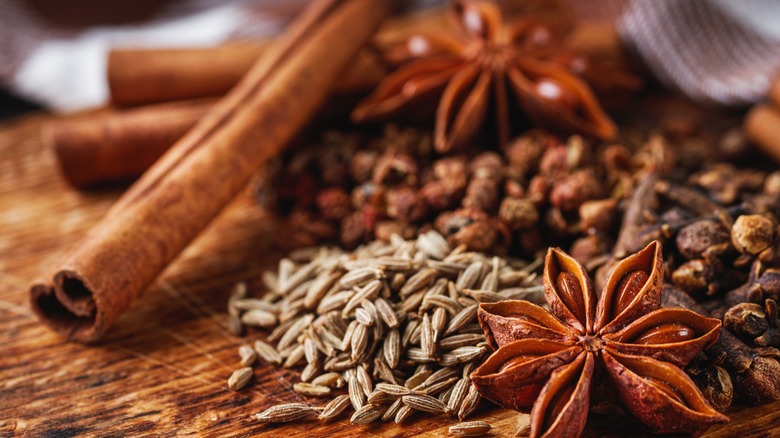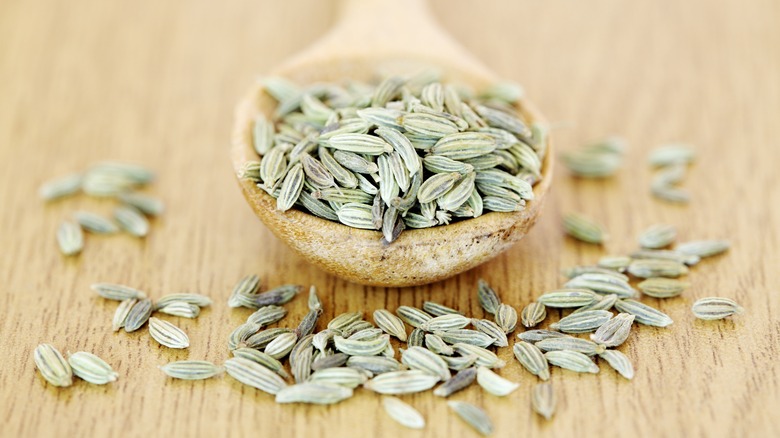17 Herbs And Spices You Should Consider Adding To Your Pie Crust
There are a whole host of recipes that every home cook should know how to make: quality scrambled eggs, a basic pasta sauce, and pie crust. While you could pick up a store-bought frozen pie crust for all your baking needs, there's something rather satisfying about seeing the elements of a homemade one all come together, wrapped neatly around your favorite fillings.
When most people think of how to customize their pies, the emphasis is often placed on the fillings. Sure, adding a little lemon zest or adding a unique fruit to the mix will switch up the pace, but why not turn to altering the crust itself? There are so many ingredients that will upgrade the flavor of your pie crust, and herbs and spices are just some of them.
As a home baker, I've personally experimented with many of these herbs and spices (both dried and fresh) in a range of savory and sweet recipes. I've curated a list of the ones you should consider adding to your pie dough, as well as how to find complementary fillings for said pies. Since recipes vary so much, and not all pies use a double crust, I intentionally avoided mentioning how much of each spice to add. Generally speaking, less is more when it comes to adding herbs and spices — so try a recipe with a couple teaspoons max and go from there.
1. Cinnamon
If you're just starting to experiment with upgrading your pie crust with spices, cinnamon is an excellent place to start. This sweet spice is relatively agreeable with different fruit fillings, which makes it a great fit for a classic pumpkin pie or an apple pie. Once you get familiar with adding this spice to the mix, you can start experimenting with pairing it with other spices to make a more cohesive dessert. The sweetness and subtle warmth make it an ideal partner for dried ginger, cloves, and cardamom.
There are some types of cinnamon that go better than others in pie crust. Cassia cinnamon is the stuff you'll see in most grocery stores; it has a stronger, spicier undertone than Ceylon cinnamon. If you're making an exclusively sweet pie, Ceylon would be a better fit. But, if you're making a DIY spice mix that integrates more savory elements, you'll want to opt for the classic Cassia.
2. Thyme
Thyme is one of those herbs that I can't stop cooking with. It's one of the earthiest ones out there and has some delectable notes that reflect a profound woodiness and herbaceousness that you don't get from many other seasonings. It's a great starter seasoning for folks looking to upgrade their pie crusts with different ingredients because the flavor is rather safe; there's no astringent or bitter notes in sight. If I'm whipping up a savory quiche, you know that thyme will make an appearance, both in the crust and the eggy filling.
While at first glance, thyme might seem like a savory-specific herb, you can also play with it in some sweet recipes. Highlight the florality of this herb by pairing it with bright pie fillings, including lemon and blueberries. Imagine how delectable a lemon meringue pie would be infused with little flecks of thyme in the crust, which would provide some balance to the tart filling.
3. Rosemary
Rosemary is yet another approachable herb that's just begging to be included in your pie crust. Like thyme, rosemary pairs equally as well with both savory and sweet pies. Its flavor is rather even-keeled but has more unique undertones than the thyme. Mainly, you'll smell and taste little undertones of pepper, lemon, and what some folks may describe as "piney." Despite these complexities, rosemary is relatively easy to use, and quite forgiving.
Your rosemary-infused pie crust will highlight the honey and sweet notes of a classic peach pie quite well. Even if you stuck with rosemary as your sole seasoning for this crust, it's enough to make this dessert the highlight of your summer table. Rosemary works equally well as a winter pie crust seasoning; try adding it to the basic dough for your chicken pot pie. This savory application would be a great place to complement the rosemary with thyme and sage.
4. Herbs de Provence
Herbs de Provence is the herb blend that I'm turning to whenever there is a quiche in the oven. What I love about this classic blend is that it's multifaceted. You'll see it pop up in French and Mediterranean dishes, including in soups and stews and slathered on grilled meat. While the exact herbs vary, some standard dried ingredients you'll find in it include rosemary, thyme, tarragon, mint, and even lavender. In short, it's a one-stop shop for all of the seasonings you need for a flavorful pie crust.
Besides quiche, which can be easily elevated by a tad of this seasoning blend and some tasty cheese, you can also use this herb blend as a simple upgrade for your pot pie. I recommend pairing it with a chicken version of this homestyle recipe; add the herbs de Provence to both the filling and the crust to get maximum flavor in every bite.
5. Chives
Chives are an herb that often gets forgotten when it comes to cooking nearly anything, let alone pie crust. It has a slight shiver of oniony flavor and brings a more herbaceous flavor than plain ol' onion powder could ever dream of. Since this herb is rather mild, you're going to want to be careful with how you use it. Stick with fillings that are not going to overshadow its grassy flavor.
If you like a lot of onion flavor in your crust, you may want to pair the chives with an ingredient that offers a similar flavor. Try adding finely sliced leeks (a milder alternative to onions) to a classic quiche filling to amplify that allium flavor. You can also add in salty elements, like bacon and ham, that will be subdued by both the eggs and the alliums.
6. Sage
Sage is up there on the list of underutilized herbs when it comes to baking. Sure, it rears its head when it comes to a homemade sausage, chicken, or brown butter sauce atop pasta. But rarely does it appear in sweet recipes. I have experimented with sage and lemon and have found rather favorable results; the mild, citrusy tang of a lemon pie would allow the minty flavor of the sage to reign supreme. You may also find that fresh sage leaves make a decadent pairing for a classic apple pie, since the honey notes of the fruit really crave something herbaceous to complement their sweetness.
If you're experimenting with sage in a savory pie, stick to the classic combinations. A sausage-filled pie could be made all the more flavorful with a sage-infused crust, while chicken or turkey pot pie is always in need of something like sage to give it a tad more flavor.
7. Curry powder
Curry powder is an asset to any home cook. It's one spice that I really enjoy putting in everything — from a simple chicken salad to salad dressing. It's also one that I find to be really handy when it comes to creating a decadent homemade pie crust.
Contrary to popular belief, curry powder is a regional spice blend with varying components rather than a single, standardized — or even authentic — mix of Indian flavors. Common elements, though, include turmeric (which gives the powder, and everything it touches, an unmistakable yellow or orange hue), ginger, cumin, coriander, and chili. Because the blend can lean sweet or hot, it's hard to give a definitive recommendation for what exactly goes well with it. The safest bet is going to be a pot pie. Since the chicken or turkey and the vegetables tend to run bland, a pop of color and warmth will do them good. Plus, the turmeric will give your pie crust a hue that makes it the star of the table.
8. Peppercorns
You can upgrade your pie crust with one of the most common spices in the home pantry: peppercorns. There are different types of peppercorns — white pepper, for example, is a hotter variety, while green is milder and earthy, pink has fruity and floral notes, and so on — but black pepper is the most popular.
Freshly milled black peppercorns provide a unique sharpness to an otherwise bland crust. While they aren't at all herby, they will dial up the spice notes just a notch. If you're scratching your head at the idea of filling a peppercorn-infused pie crust with fruit, this is your sign to get out of your comfort zone. Try pairing it with sweet cherries; the juiciness of the stone fruit will go well with the biting taste of the peppercorn. You can also help distract from the peppercorns' flavor by adding in a little bit of cheese (like pecorino) and pairing it with a savory filling, like a quiche or a pot pie.
9. Cardamom
Cinnamon always seems to get the spotlight, but it's fair to say that cardamom just has a bit more going on. There are two main varieties of cardamom, in addition to coming in either pod or ground forms: green cardamom has some pepper and pine notes that underlay delectable mint and citrus, while black cardamom has a smokier flavor. Ground green cardamom is most popular, particularly for sweet dishes and baked goods: It's complex, but that doesn't mean you can't play with it when it comes to whipping up a delicious pie crust.
Cardamom's personality makes it an ideal pairing for a simple fruit pie. While cinnamon brings a subtle, back-of-mouth heat, adding cardamom to your crust instead will bring out more peppery flavors and a citrusy, eucalyptus-like undertone that will accentuate the sweetness and florality of apples, cherries, blueberries, and more. Moreover, cardamom is one of few spices that you can match with chocolate, like in a silk pie.
10. Allspice
Although its name might make you think it's an amalgamation of many different individual spices, allspice is actually a dried berry sourced from a singular plant. You wouldn't be able to tell that by its flavor though. Folks often pick up on other warm spice notes from it, including cinnamon, cloves, and nutmeg.
Allspice is just begging to get paired with pumpkin pie. I'd recommend combining it with dried ginger here for a little back-of-mouth heat. The overtones also make allspice a great match for a pecan pie, since it will balance some of the sweetness from the syrupy, cloying filling and complement its nutty flavor. The key to using allspice is to buy the seeds whole and grind it right before you need to use it; this will give you the most potent aroma and flavor possible.
11. Garlic powder
We've all had the experience of needing garlic for a recipe and realizing that the cloves have sprouted or that we've used all of it up. Then we mutter with shame, "I guess garlic powder it is."
Although garlic powder lacks that unmistakable aroma and won't give you the tacky feeling on your fingers after you handle it, it really deserves some appreciation. It's an easy way to add that concentrated allium flavor to your pie crust without having to worry about biting into a raw garlic clove tucked into layered, flaky pastry dough. Plus, garlic powder meshes well with an array of different seasonings, including thyme, rosemary, and sage. Moreover, if you have leftover pie crust infused with garlic powder, rest assured that it makes equally delicious crackers. You can essentially use this pie crust for any filling that would otherwise contain garlic, including pot pie, meat pie, quiche, and more. It's in good company with other alliums, including leeks and onions.
12. Dried ginger
Dried ginger is kind of like college jungle juice. You give it a sniff, and maybe even a taste, and only realize how potent it is until after you've had far too much. So, when integrating this warming spice into your pie crust, you'll have to be very, very careful with how much you pour from the bottle. It's more spicy than it is sweet, and it will leave your throat with a burning sensation — not unlike the aforementioned alcoholic concoction.
Dried ginger goes really well in pie crust because it offers a welcoming burn that will perk up your senses. Pair it with other warming spices, like nutmeg, allspice, and cinnamon, and add it to your autumnal pie recipes — including pumpkin, pecan, and apple. You can also add a sprinkle of dried ginger to your cookie crumb crusts and give them a more fall feel. A basic vanilla wafer cookie crust or one made with crumbled gingersnaps could really benefit from the pop of this spice — just be sure to be judicious with it.
13. Chai
There's nothing better than snuggling up on your couch with a brimming cup of chai tea. Oh wait, there is: combining the warming spices you love about this beverage into an equally deserving pie crust. This spice blend contains some major players, but you may also find some blends that utilize even more unique spices — including black peppercorns, fennel, and nutmeg. The standard additions include cinnamon, cardamom, ginger, cloves, and allspice. The cardamom-forward notes are what sets this spice blend clearly apart from the others, like pumpkin or apple pie spice. So, you can use it in the same ways that you would opt to use plain cardamom.
One decadent pairing for chai is blueberry. I can't definitively say why the cardamom-forward spice and blueberry is a match made in heaven, but I suspect it's because the citrusy undertones and eucalyptus-like bite highlights the organic, sweet-tart pop of the fruit. Add a little bit of lemon to your blueberry filling, combined with the chai-spiced crust, and you'll have a treat that blurs the lines between summer and fall.
14. Celery seeds
Celery seeds are far from the most common spice on this list to have in your pantry. In essence, the seed is a reflection of all the flavors of the plant mashed into one pod, sans the awkward experience of pulling a celery strand from your teeth. You may have already tried these seeds before, which are roughly the size of a poppyseed; they're a popular addition to pickle brines and bloody mary mixes.
Celery seeds are a simple way to add extra flavor to your chicken pot pie. If you used celery seeds in a meat or sausage pie, you may find that the flavor gets lost along the way. The chicken is just bland enough that it craves the mirepoix-ish pop of the celery seeds. Plus, if your pie filling already contains sliced celery, you'll find that biting into a crust infused with these seeds is really helpful in reigning that flavor back in after it's mostly been cooked off.
15. Basil
I love a good caprese from time to time, and pesto is more a go-to sauce in my kitchen than marinara is. So, it's safe to say I always have a few sprigs of basil left over in my fridge at any given time. Genovese basil, which is the variety that most folks are used to finding in Italian cuisine, has a licorice-like flavor to it. It's sweet, it's herbaceous, and it never fails to perk up your senses. These qualities make basil, either fresh or dried, a great addition to a pie crust. As is the case with recipes that use basil, simple is the best way to go when adding it to a pie crust. Don't pair it with any herbs that are going to take away from its rightfully deserved stardom.
One of the most creative pairings is a basil pie crust and a tomato pie. Not the tomato pie that's closely linked to New Haven-style pizza; this one is made with layers of juicy, Roma tomatoes, onion, and cheese. Okay, maybe it's like a tomato pizza in a pie crust — but at least the dough is a little herbier.
16. Chinese five spice
Chinese five spice carries a little bit more of a stuffy reputation than other spices. Every time something on the menu has Chinese five spice in it, I always perk up. It's not that it's that different from other spice blends, either. But the combination of star anise, cloves, fennel, cinnamon, and Szechuan peppercorn gives it more of an edge than other spices — and it means that it can stand up to formidably flavored meat pies, like ones made with beef, lamb, or pork.
Since there are sweet elements to this spice blend, mainly the cinnamon, cloves, and star anise, you could also pair it with sweet pie fillings, like a Thanksgiving pumpkin or autumnal apple. I like to think that the underlying heat from the peppercorns brings attention to the sweetness of the fillings and makes for a well-rounded bite.
17. Fennel seeds
Can we please give fennel a round of applause merely for existing? While biting into a fennel seed will give you a momentary shock as the profound anise flavor hits your tongue, it's still a welcomed profile — and one that I admittedly don't get to experience very often. Fennel is often found in sausage, which is why it makes a great addition to the crust of a meat pie. Try swapping out the puff pastry dough in our Australian meat pie recipe for one infused with black peppercorns and fennel.
Ideally, to avoid the feeling of biting into a fennel seed, you should try to grind yours down into a fine powder first. A word to the wise, though — always opt for a hot water crust over a conventional one for making meat pies. This type of pastry can withstand the hefty fillings without leaking and will keep its shape outside of the tin. And fear not, you can mix in your herbs just like a normal pie crust without having to worry about their flavor changing too much.
